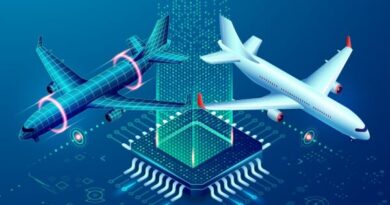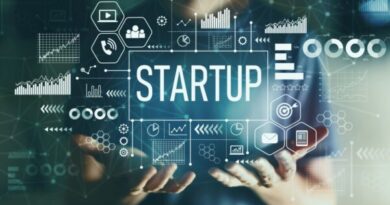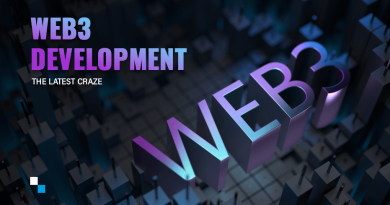How will the Internet of Things transform Our Lives?
The Internet of Things (IoT) is revolutionizing our world, merging the digital and physical spaces into one interconnected ecosystem. From smart homes to intelligent cities, IoT is enhancing our lives by making our environments more efficient, convenient, and interconnected. As we delve deeper into this technological marvel, we uncover the profound impact it has across various sectors, driving us toward a more advanced and responsive future.
Understanding IoT:
IoT involves a network of physical devices—from everyday household items to complex industrial machines—embedded with sensors, software, and other technologies. These devices connect and exchange data over the internet, allowing them to communicate and interact, thereby creating a smarter and more responsive environment. The fundamental idea is to create an ecosystem where devices can share information and perform actions without human intervention, leading to automation and improved efficiency.
Key Components of IoT:
Sensors and Actuators: These components gather and respond to data. Sensors collect environmental data, such as temperature, humidity, light, and motion. Actuators then perform actions based on this information, like adjusting a thermostat, turning lights on or off, or even activating security systems.
Connectivity: Seamless data transmission is crucial. Various communication protocols such as Wi-Fi, Bluetooth, Zigbee, and 5G enable reliable connectivity. The choice of connectivity often depends on the specific application, range, and data rate requirements.
Data Processing: The true power of IoT lies in its ability to process massive amounts of data. Technologies like edge computing and cloud computing are essential for real-time data analysis. Edge computing allows data processing at the location where it is generated, reducing latency and bandwidth usage. Cloud computing, on the other hand, provides centralized processing and storage, enabling sophisticated data analysis and long-term data archiving.
User Interface: The processed data needs to be accessible and understandable. This is achieved through user-friendly interfaces like mobile apps, web dashboards, or voice assistants. Effective interfaces allow users to monitor and control their IoT devices seamlessly, enhancing the overall user experience.

IoT in Action:
1. Smart Homes:
In smart homes, devices like thermostats, refrigerators, and lighting systems operate intelligently. For example, a smart thermostat can learn your schedule and adjust temperatures accordingly, while smart lighting systems can turn off automatically when you leave a room, conserving energy. Additionally, smart home security systems provide real-time monitoring and alerts, enhancing safety and peace of mind. Voice assistants like Amazon Echo and Google Home integrate various smart devices, allowing for centralized control and automation through voice commands.
2. Healthcare:
IoT is transforming healthcare with devices that enable remote monitoring and telemedicine. Wearable technology such as fitness trackers and smartwatches monitor vital signs, track physical activity, and detect irregularities, allowing for timely medical interventions and personalized care. Smart medical devices, like connected inhalers and insulin pumps, provide real-time data to healthcare providers, improving patient management and outcomes. Remote patient monitoring systems enable continuous health assessment for chronically ill patients, reducing hospital visits and improving the quality of care.
3. Industrial IoT (IIoT):
In industries, IoT enhances productivity and safety. Smart factories utilize IoT to monitor machinery, predict maintenance needs, and optimize processes. This leads to reduced downtime, cost savings, and improved safety for workers. IoT sensors track equipment performance and environmental conditions, enabling predictive maintenance that prevents unexpected breakdowns. In supply chain management, IoT devices track goods in real-time, ensuring efficient logistics and reducing losses. Industrial robots and automated systems, guided by IoT, streamline manufacturing processes, increasing output and quality.
4. Smart Cities:
IoT is making cities smarter through applications in traffic management, waste management, and public safety. Smart traffic systems reduce congestion by dynamically adjusting traffic signals based on real-time traffic conditions. Smart waste bins optimize collection routes, notifying waste management services when they need to be emptied, thus reducing operational costs. Enhanced surveillance systems, integrated with IoT, improve security and emergency response, making urban areas safer. Environmental monitoring systems track air quality and pollution levels, helping cities implement policies for a healthier living environment.
5. Agriculture:
IoT is driving innovation in agriculture, leading to more efficient and sustainable farming practices. Smart sensors monitor soil conditions, moisture levels, and crop health, providing farmers with real-time data to optimize irrigation and fertilization. Drones equipped with IoT devices survey large agricultural areas, detecting issues like pest infestations and nutrient deficiencies early. Automated machinery, such as self-driving tractors and harvesters, streamline farming operations, increasing productivity and reducing labor costs. IoT-enabled livestock management systems track the health and location of animals, ensuring better care and reducing losses.
6. Energy Management:
IoT plays a crucial role in energy management by optimizing energy consumption and integrating renewable energy sources. Smart grids use IoT to monitor and manage electricity flow, balancing supply and demand efficiently. Smart meters provide consumers with real-time data on their energy usage, promoting energy-saving practices. IoT devices control lighting, heating, and cooling systems in buildings, reducing energy waste and lowering costs. In renewable energy, IoT sensors track the performance of solar panels and wind turbines, ensuring maximum efficiency and prompt maintenance.
Challenges and Considerations:
While IoT presents vast opportunities, it also poses significant challenges:
- Security: With the proliferation of connected devices, ensuring data security and privacy is crucial. Implementing robust security measures, such as encryption, authentication, and regular updates, is essential to protect sensitive information and maintain trust.
- Interoperability: The wide variety of IoT devices and communication protocols can lead to compatibility issues. Standardization is essential for seamless integration and operation. Efforts are underway to develop universal standards and protocols that ensure interoperability across different devices and platforms.
- Scalability: As the number of connected devices increases, so does the complexity of managing and processing data. Scalable solutions are necessary to handle the growing data volumes and device management needs. Cloud and edge computing, along with advanced data analytics, provide the necessary infrastructure to support large-scale IoT deployments.
- Data Privacy: The vast amounts of data generated by IoT devices raise concerns about data privacy. Establishing clear policies and regulations on data collection, storage, and usage is critical to protect user privacy and build public trust.
- Power Consumption: Many IoT devices are battery-powered, and efficient power management is crucial to ensure their long-term operation. Developing low-power technologies and energy-harvesting solutions can help extend the lifespan of IoT devices.
The Future of IoT:
The future of IoT is bright, with advancements in artificial intelligence, machine learning, and 5G technology set to enhance its capabilities. Here are some emerging trends:
- AI and Machine Learning: These technologies will enable more advanced data analysis, predictive maintenance, and autonomous decision-making. AI algorithms can process large datasets from IoT devices, identifying patterns and insights that drive innovation and efficiency. Machine learning models can predict equipment failures, optimize supply chains, and personalize user experiences based on behavioral data.
- 5G Connectivity: The advent of 5G networks will provide faster and more reliable connectivity, supporting the expansion of IoT devices and enabling new applications like autonomous vehicles and smarter cities. The low latency and high bandwidth of 5G will facilitate real-time data transmission and processing, essential for applications that require immediate responses, such as autonomous driving and remote surgery.
- Edge Computing: By processing data closer to where it is generated, edge computing will reduce latency and bandwidth usage, making IoT systems more efficient and responsive. Edge devices can perform real-time analytics, filter relevant data, and make decisions locally, reducing the need for constant cloud communication. This is particularly important for applications in industrial automation, healthcare, and smart cities, where immediate responses are critical.
- Blockchain: Blockchain technology can enhance the security and transparency of IoT systems. By providing a decentralized and tamper-proof ledger, blockchain can ensure the integrity and authenticity of data exchanged between IoT devices. This can be particularly beneficial in supply chain management, healthcare, and financial services, where data security and trust are paramount.
- Digital Twins: Digital twin technology creates virtual replicas of physical objects or systems, allowing for real-time monitoring, simulation, and optimization. IoT data feeds into digital twins, providing a comprehensive view of an asset’s performance and enabling predictive maintenance and scenario testing. This technology is gaining traction in industries like manufacturing, aerospace, and urban planning.
Conclusion:
The Internet of Things is more than just a technological trend; it is a transformative force reshaping our world. By connecting devices and enabling communication, IoT is creating a smarter, more connected, and efficient future. As innovation continues and challenges are addressed, the possibilities of IoT are endless, heralding a new era of technological advancement and human potential. The integration of IoT with emerging technologies will drive unprecedented changes across various sectors, improving our quality of life and opening new opportunities for growth and development. The journey of IoT is just beginning, and its impact will continue to expand, bringing us closer to a future where the digital and physical worlds seamlessly coexist.
FAQs:
- How does IoT impact cybersecurity and privacy?
IoT devices collect and transmit sensitive data, raising concerns about cybersecurity vulnerabilities and privacy breaches. Ensuring robust security measures, such as encryption and regular updates, is essential to protect against potential threats and unauthorized access to personal information.
- What are the environmental implications of IoT technology?
IoT offers opportunities for environmental monitoring and sustainability efforts. By optimizing energy use, managing resources more efficiently, and reducing waste through smart systems, IoT contributes to creating more eco-friendly practices and reducing carbon footprints.
- How does IoT contribute to personalized healthcare?
IoT devices enable continuous health monitoring and personalized healthcare solutions. From wearable fitness trackers that monitor vital signs to remote patient monitoring systems that transmit real-time health data to healthcare providers, IoT enhances healthcare delivery by offering personalized insights and proactive interventions.
- What role does IoT play in enhancing urban mobility?
IoT technologies play a crucial role in improving urban mobility through smart transportation systems. By integrating data from sensors and traffic management systems, cities can optimize traffic flow, reduce congestion, and enhance public transportation efficiency, ultimately leading to smoother and more sustainable urban mobility solutions.
- How can IoT transform agriculture and food production?
IoT innovations in agriculture, often referred to as AgriTech, revolutionize farming practices by enabling precision agriculture. IoT sensors monitor soil conditions, moisture levels, and crop health, allowing farmers to optimize irrigation, minimize pesticide use, and increase crop yields. This technology helps meet growing food demands sustainably while conserving resources and reducing environmental impact.




